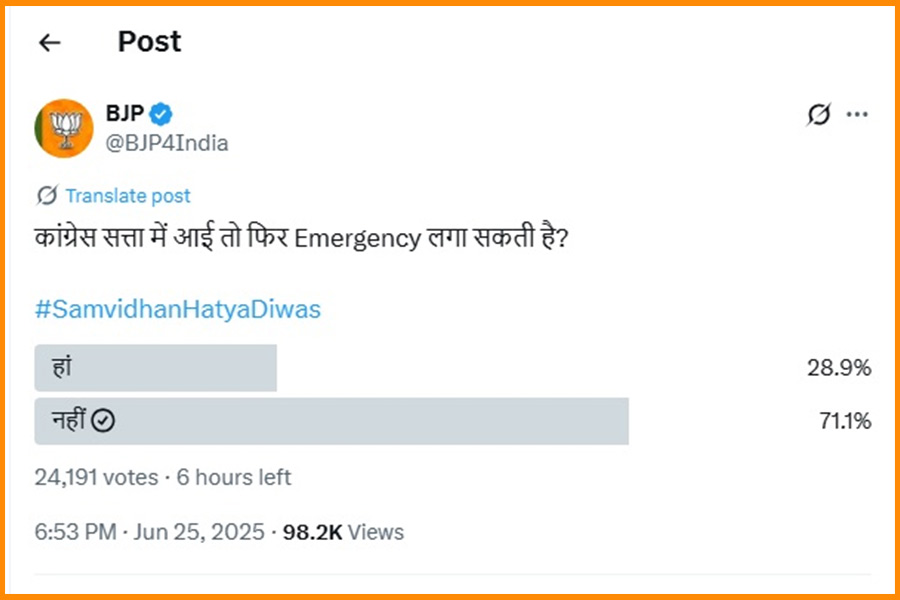
Recently, I had a strange dream in which I saw a golden broom on a glittering golden peacock throne of diamonds, rubies, and sapphires. The dream was still vivid when I woke up and it triggered a chain of reflections that I want to share with you.
The golden broom made me think of the Puri car festival in which the king of Puri sweeps the three chariots before the idols take their places in the chariots at the beginning of the festival in a ritual known as Pahandi.
If you run away with the impression that I am inclined to associate the broom, in a religious framework, with Lord Jagannath and the king of Puri, you are mistaken. In medieval times, the broom and the broomstick were closely associated with witches’ covens, where the witches from the far corners of the world were said to have flown in on their broomsticks, using them as flying machines, to participate in the secret rites held for the worship and glorification of the Devil. In our time, the broomstick as a flying machine has been resurrected by the
famous novelist, J.K. Rowling, in her Harry Potter series.
The broom has been regarded, in popular belief, as an effective ghost-buster and exorcising agent along with the footwear. I used to have doubts on this theory for a long time until I had an extraordinary experience involving a close friend, after which I have developed new respect for these two humble-looking but powerful weapons against evil spirits and the fears they generate in the minds of many of our fellow human beings. I have shared this story with many friends and I’ve decided to share it with you too.
Some years ago, a friend of mine moved into a penthouse atop a highrise. It was a nice penthouse with a spacious terrace with a beautiful view and he liked it very much.
After a long day at work, he looked forward to a restful night, unlocked the door and entered the apartment only to have the shock of his life. In the dimly-lit room, he saw an apparition resembling a woman in white sari, sitting on his bed. He ran out closing the door behind him and spent the night in a friend’s house, from where he called me.
I asked for the details. He said he had seen the apparition in the dim light of the bedroom lamp. When he turned on a bright light, it vanished. Therefore, he concluded that it was a ghost. It might as well be an angel, a good spirit and, for all that, it might be my friend’s guardian angel!
I realised at once that this line of thinking was flawed, for how could one identify a good spirit or God himself? If Vishnu or Shiv or Kali appeared to you in the dead of the night, how would you react? Wouldn’t you be frightened out of your wits? How could the poor gods or goddesses identify themselves to your satisfaction? Even if they had an irrefutable ID or other proof with them, would you wait to disabuse your mind of disbelief and supernatural horror?
When I was wondering how to help him, my invisible guardian angel reminded me of what I had learnt from my parents and grandparents. I advised him to use the traditional ghost-busting weapons - the broom and the footwear. Next day, he put them under his bed as advised by me. No spirit visited him thereafter and he lived in his penthouse happily entrusting his psyche to the kind care and protection of the broom and the footwear.
When Rajiv Gandhi became Prime Minister in 1984 after leading his party to an epoch-making victory in the elections with the image of an incorruptible leader, he was called Mr Clean and Mr Broom. He promoted technology, which was on the rise at that time, and I thought that he would mechanise every field of activity including the business of cleaning up places. I was waiting for the news that mechanical cleaners like vacuum cleaners would replace the traditional brooms, which would be preserved in museums.
But fate willed otherwise, and the broom has proved to be a powerful survivor.When Chandrababu Naidu became chief minister of the undivided Andhra Pradesh in 1995, he started a cleanliness programme called Janma Bhoomi with a lot of fanfare. The broom came back with a bang. Offices opened in the morning with the staffers armed with brooms working hard to keep the premises clean. Hyderabad won the "cleanest and greenest city" award for three years in a row. It was like a prologue to the present day Swachh Bharat programme.
Between Naidu and Narendra Modi emerged a relatively newcomer to politics called Kejriwal, who is hard-working and development-minded like the other two. He might have been inspired by R.K. Laxman’s Aam Aadmi and the broom of Naidu’s Janma Bhoomi! He called his party Aam Aadmi and adopted the broom as its symbol. The party fought twice in the elections with the broom as its symbol and won.
The broom has emerged not only as a strong survivor but also as one of the most popular icons in the country. Its prestige has risen as high as the Qutab Minar.
I was wondering why and how Modi’s BJP and Naidu’s TDP came together to form the governments at the Centre and in Andhra Pradesh. Then it dawned on me that the broom brought them together. But, then, you might ask me, why the Aam Aadmi broom keeps aloof. It is a new broom slowly getting used to the rough and tumble of politics, and needs time to settle down. After all, a broom is a broom. I do not want to hazard a prophecy, but the possibility of a common minimum programme for the benefit of the common man cannot be ruled out. It stands to reason that if two brooms can make India clean and strong, three can make it cleaner and stronger in a shorter time. But India, the land of heat and dust, is a tough proposition even for two or three powerful brooms.
I do not know when my dream of a golden broom on a gem-incrusted peacock throne will become a reality though.
(The author taught English literature at Utkal University)










